How To Master The Pull-Up—One Of The Toughest Bodyweight Moves There Is
Our pull-up guide will help you take on the most challenging of fitness classics for serious upper-body strength
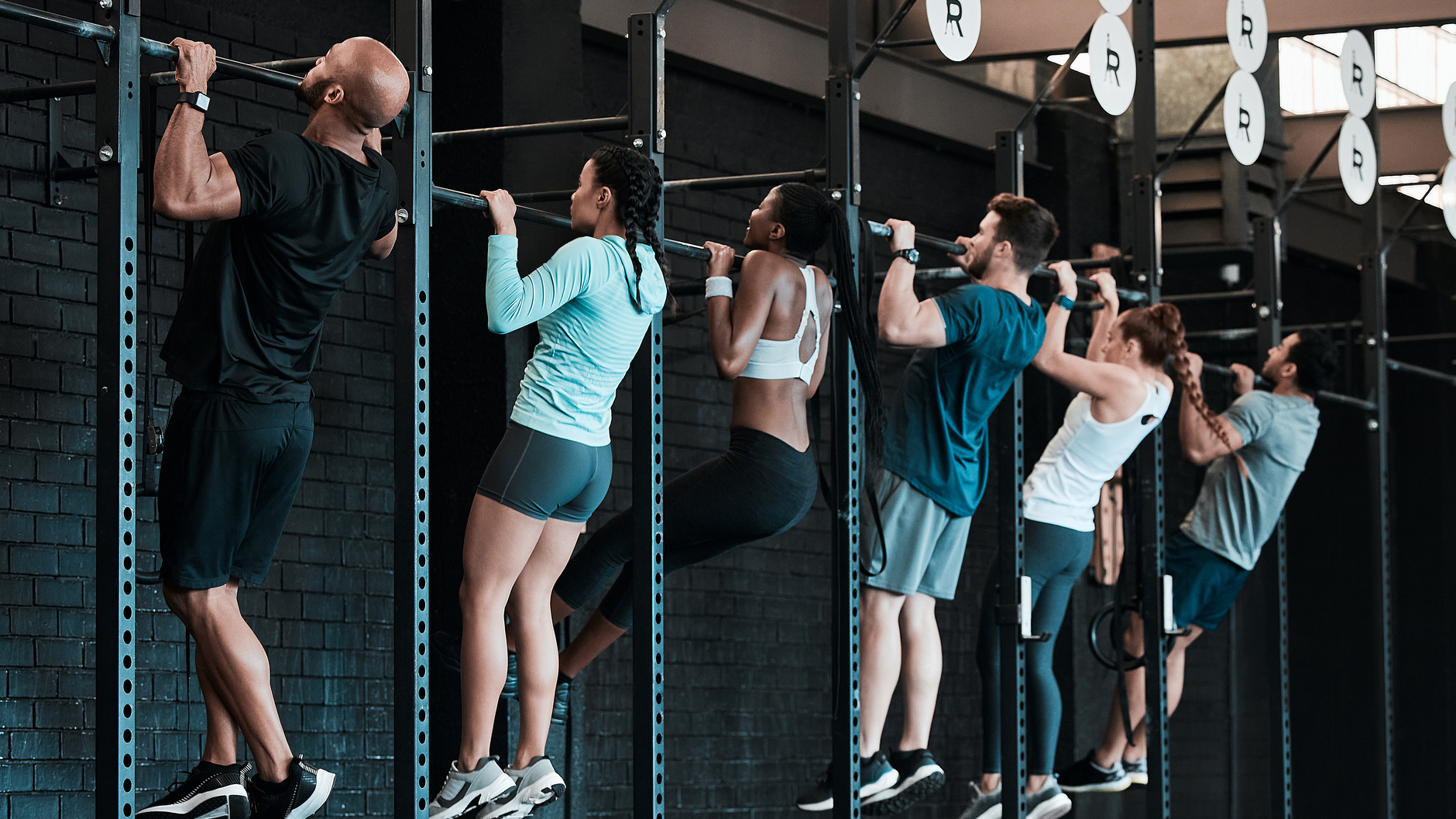
You probably don’t need us to tell you that the pull-up is one of the toughest bodyweight exercises there is. If you’ve ever attempted to knock out a set in the gym, or just pull yourself up and over a wall out in the real world, you’ll know the demands it places on your back, shoulder and arm muscles.
Being able to perform a strict pull-up is a great goal to have and our comprehensive guide to the movement can help you achieve just that. We also have form tips to help you refine your technique, and variations and challenges you can try once you’ve nailed it. But first, a few frequently asked questions, answered.
What are pull-ups good for?
“It’s the ultimate test of upper-body muscular strength and one of the very few bodyweight moves that works your back and biceps,” says former Royal Marines PTI Sean Lerwill. “A lot of people get fixated on their bench press best, but I think your total pull-ups effort is a far better indicator of a strong, stable and functionally fit upper body that has real-world performance capability.”
How many pull-ups should I be able to do?
The Potential Royal Marine Course (PMRC) requires you to do three full pull-ups to stay on the course, while 16 gives a maximum point score. “A guy in good shape should be able to do about six perfect-form pull-ups at a slow and controlled tempo, with an aim of getting to 12 reps,” says Lerwill. “Once you get to that point you should make them harder by holding a dumbbell between your ankles or wearing a belt with weight plates attached.”
Pull-Up Benefits
Aside from the sense of achievement that comes with mastering a feat of strength most people struggle with, what are the benefits of hoicking yourself above a bar? To find out, we spoke to Fiona Scott, head of physical performance at Performance Herts at the University of Hertfordshire.
“The pull-up is a compound exercise, meaning it involves more than one muscle group,” says Scott. “This is positive news for anyone wanting to get globally strong. It’s a good way to train if you’re short on time too.”
What muscles do pull-ups work?
“Pull-ups get your shoulder joints moving,” says Scott, “engage your lats [or latissimus dorsi, a large muscle in your back], and if you’re doing the chin-up variation you really hit the biceps as well. They will also boost your grip and forearm strength.”
By using the muscles in your back and arms, this exercise will help build transferable strength that can improve your performance in the barbell bent-over row, a fundamental strength training move.
But there are more benefits to performing pull-ups than just building muscle. “They can do wonders for your shoulders,” says Scott. “You’re holding your own bodyweight and you’re also moving through a good range of motion. The shoulder can have a lot of problems associated with it because it has such a free range of movement—the more movement a joint has, the more issues can often affect it.
“In the initial part of the pull-up movement, you should do something called scap-setting. This is bringing the scapula, or shoulder blade, into a favourable position to perform the rest of the movement.”
Get the Coach Newsletter
Sign up for workout ideas, training advice, reviews of the latest gear and more.
Scott warns that many people miss out on this benefit because they don’t start and finish in a dead hang position, so skip the lower portion of the movement.
“When you’re at a full hang you’re training the muscles around the scapula (which are often weaker due to our hunched posture in everyday life) like the lower traps and rhomboids. You’re also strengthening the rotator cuff muscles, which many people become familiar with through injuries.”
Fiona Scott is a strength and conditioning coach with 15 years’ experience in the sports and fitness industry. She has worked with the England and Arsenal women’s football teams, and Olympic and Paralympic athletes. Scott is the head of physical performance and academic liaison at Performance Herts at the University of Hertfordshire.
She has a BSc in sport and exercise science from the University of Birmingham and an MSc in strength and conditioning from Middlesex University. Scott is also a certified strength and conditioning coach (CSCS), UK Strength and Conditioning Association accredited coach (ASCC) and corrective exercise specialist (CES).
How To Do A Pull-Up
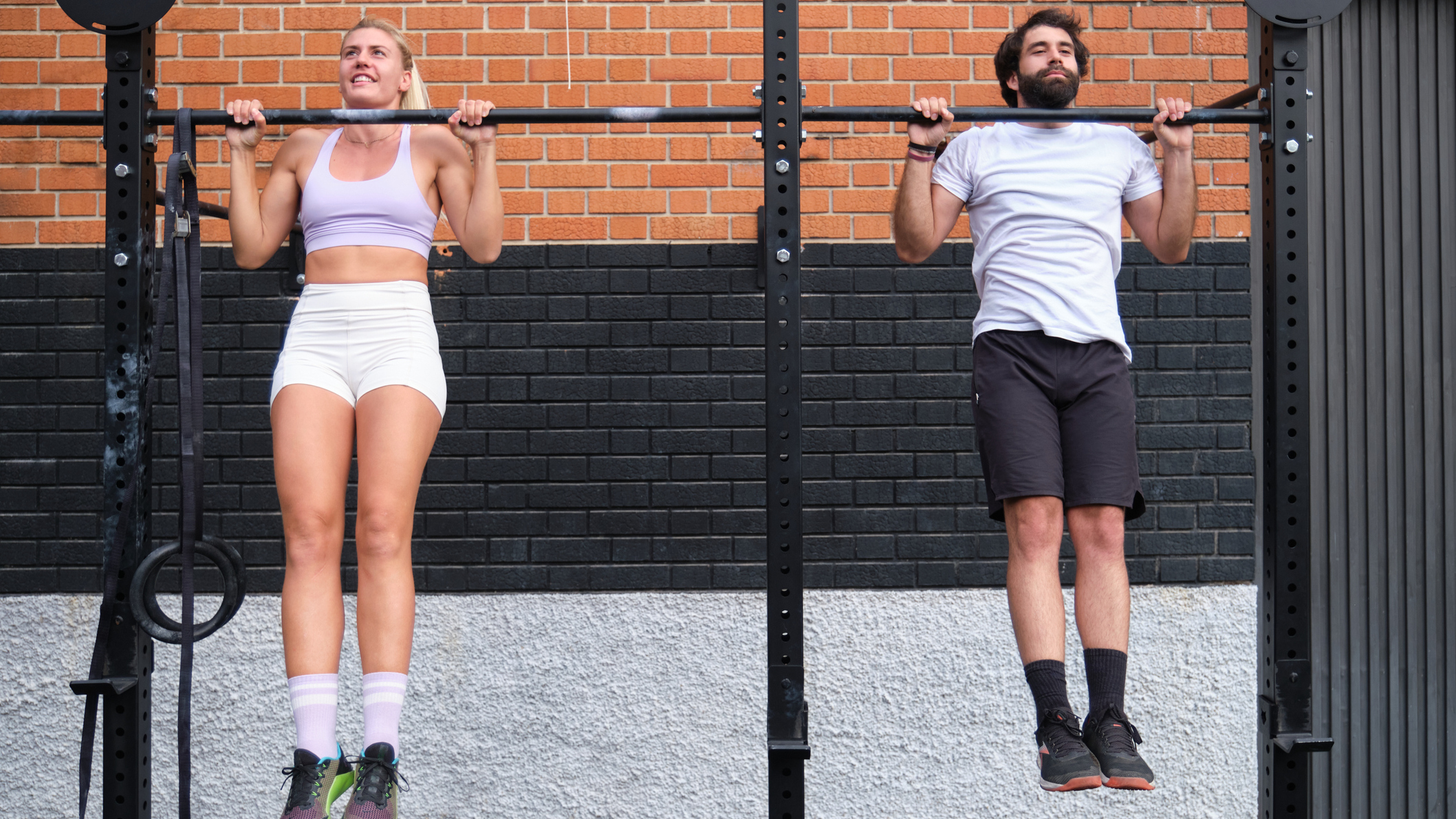
You probably think you know how to do a pull-up, but refining your technique makes it easier to do and helps you get more from it. Here’s Scott’s expert form guide.
First, grasp the bar with an overhand grip, palms facing forwards, with your hands just wider than shoulder-width apart. Depending on the height of the bar, you may need to jump up to grab the bar, or if you’re new to pull-ups, a box or step can help you get into position.
“Start in a dead hang, gripping the bar with your arms fully extended,”says Scott. “Then it’s time for scap-setting: pull your shoulder blades back towards each other and down.”
Brace your core and glutes to keep your legs and torso stable, then begin the movement. “Use your lats to pull yourself upwards—imagine you’re trying to pull your elbows into your jean pockets,” says Scott. “Your end point will depend on your shoulder mobility, but usually you should aim to bring your chin at least above the bar.”
Pull-Ups For Beginners
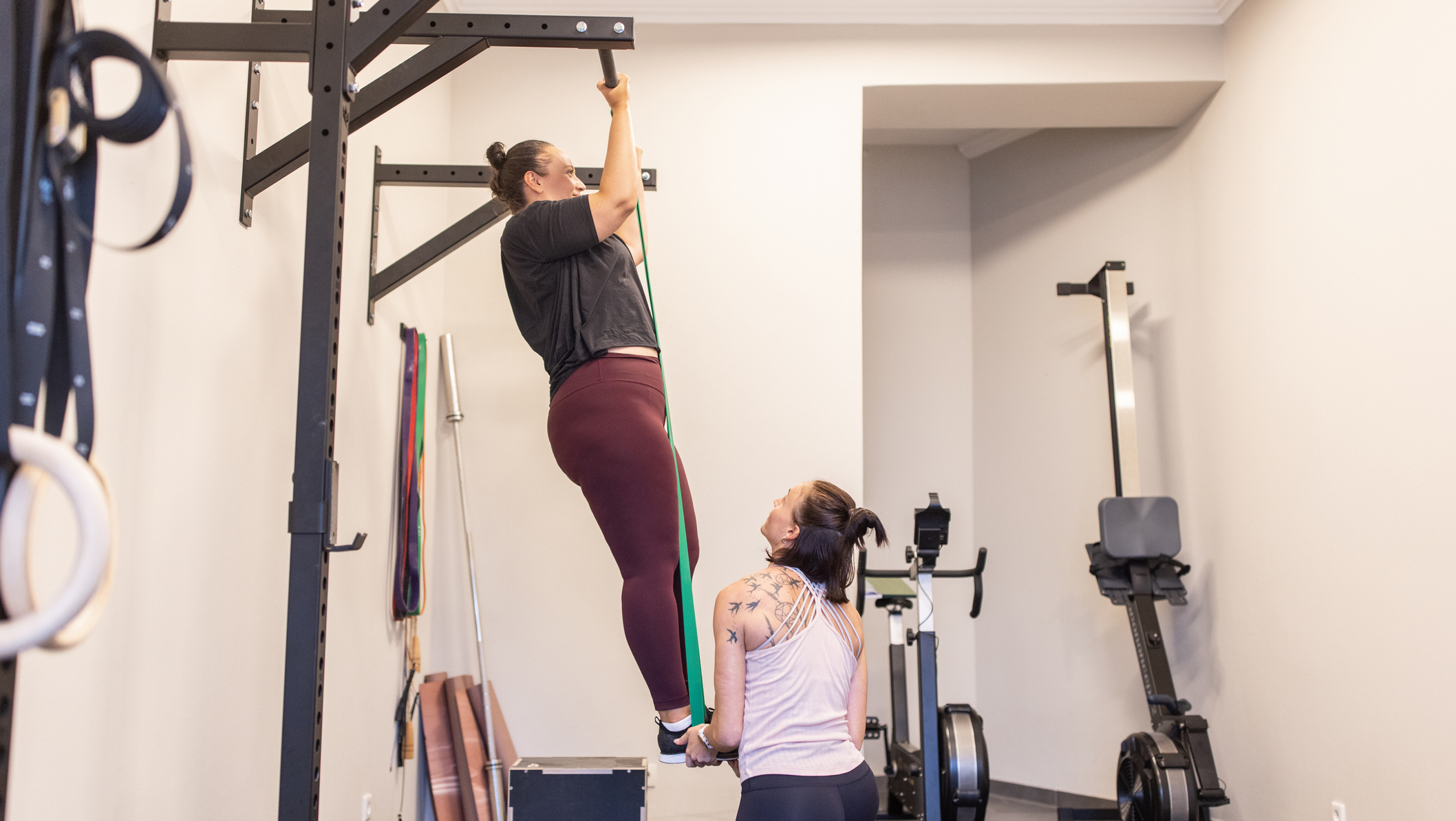
“It isn’t common for people to just walk up to a bar and do a pull-up straight away,” says Scott. “And, unlike other exercises like the back squat where you can start with bodyweight versions before progressing to a barbell, it’s a difficult movement from the off.”
Fortunately, there are techniques that will help beginners develop the strength required to do a pull-up—and develop quicker than they may expect.
“Most people will need to use regression options,” says Scott. The first thing to do is to learn to hang on to the bar. Build up to being able to do a dead hang for 30 seconds—that shows you can manage your own bodyweight.
“Next up is practising scap-setting. This is where, in that hang position, you pull yourself up a couple of inches just using your shoulders (your arms should remain straight). The cue I use for that movement is to imagine squeezing a satsuma between your shoulder blades, then relax. If you struggle to do this with your bodyweight, you can also perform this exercise on a lat pull-down machine.”
After you feel comfortable with this, use banded pull-ups and eccentric pull-ups (explained in our sections on variations below) to build strength in your back and biceps.
Our pull-up workout plan for beginners brings all this together in a four-week schedule. All you need is a pull-up bar, and our guide to the best pull-up bars helps you find one.
Pull-Up Assistance Lifts
Try these supportive machine moves to power up your pull-up prowess.
Lat pull-down
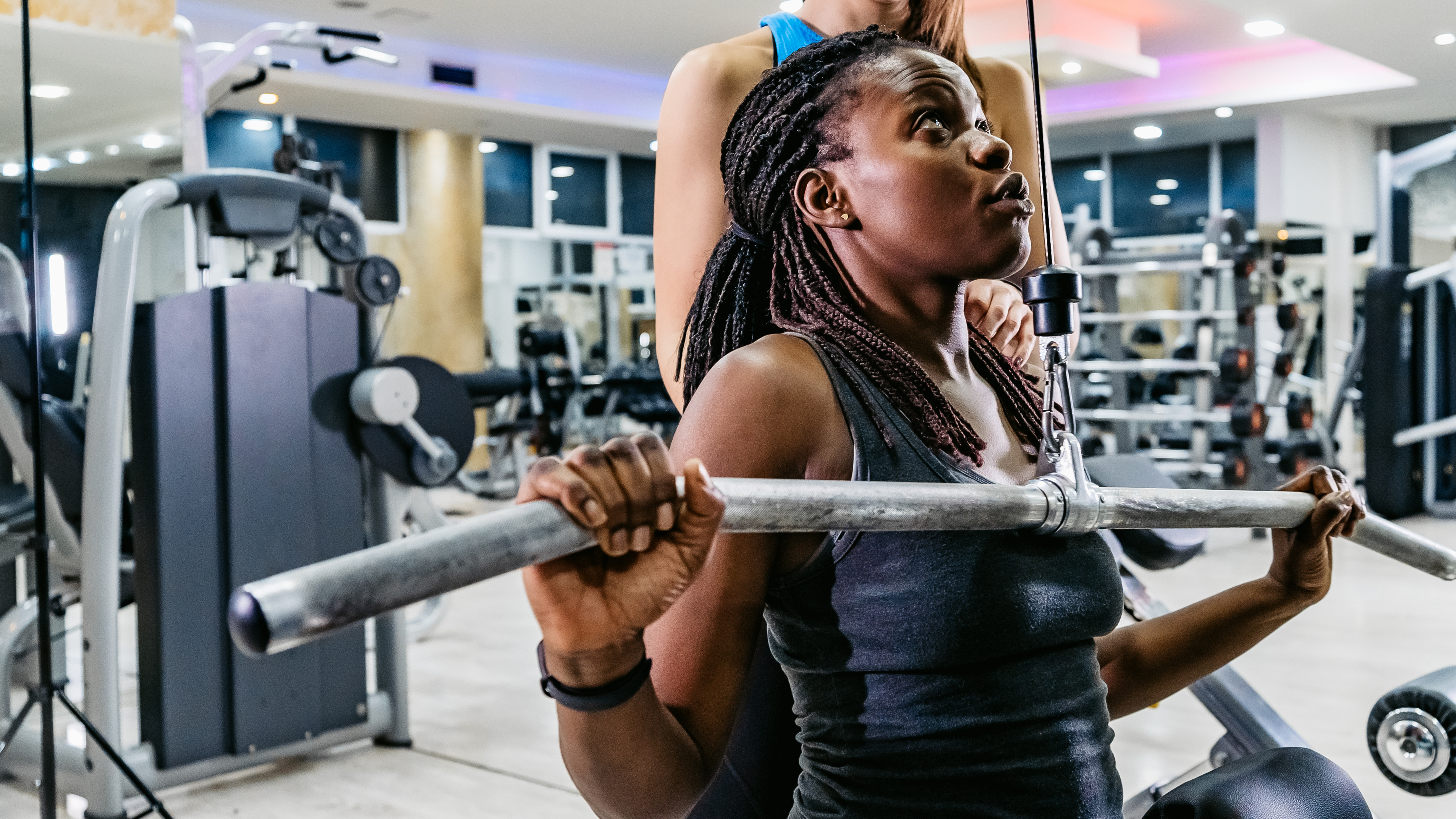
This machine move most closely replicates the muscle actions required to do pull-ups. The wider your hands on the bar, the more you isolate your lats, making each rep harder.
Cable face pull
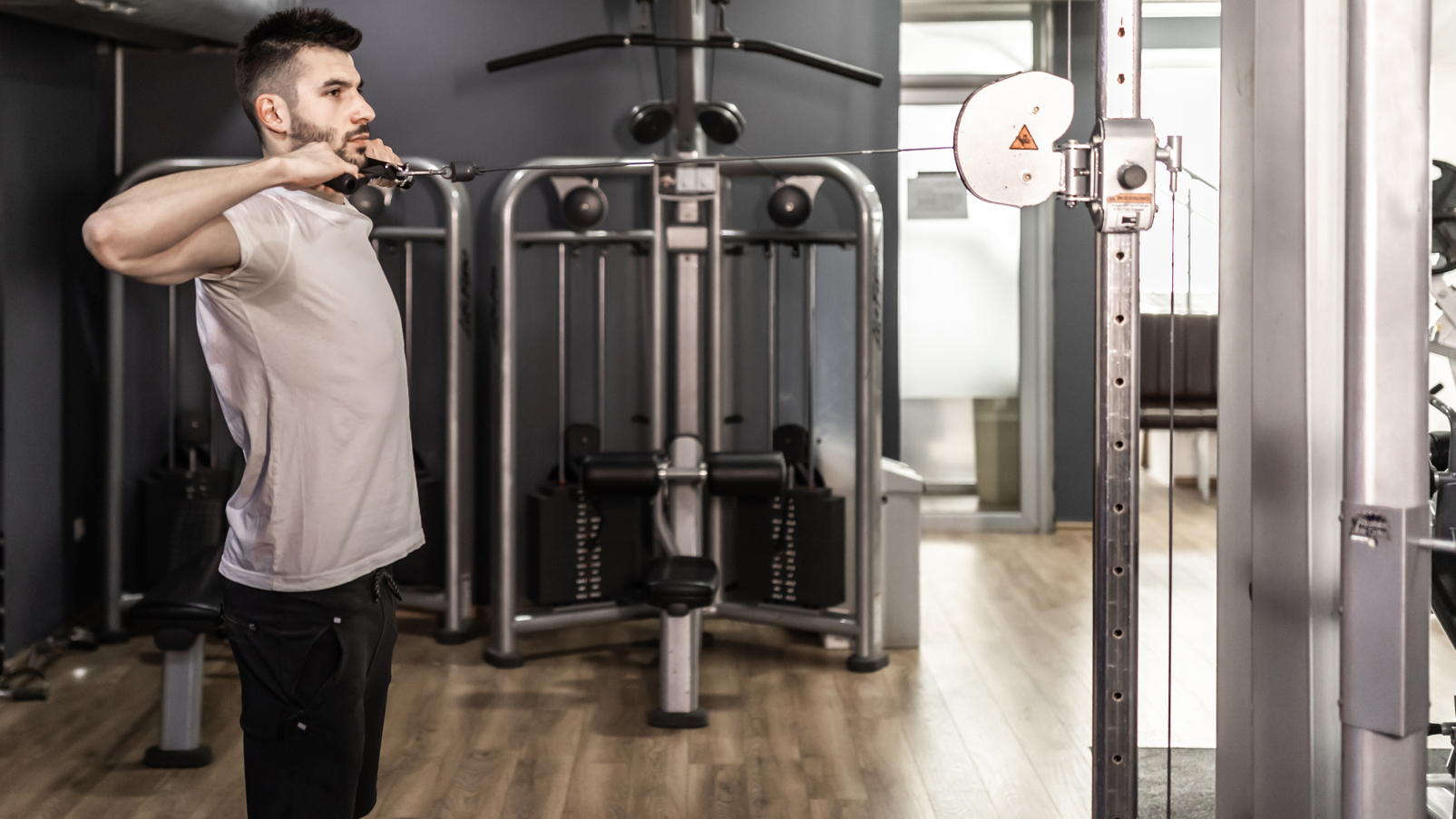
This works wonders for your pull-up ability by not only improving your hunched-over posture from too much sitting but also making you learn how to retract your shoulder blades properly, which is key to perfect pull-up form. Do three light sets of 15 after your back or shoulders session.
Pull-Up Form Tips
For advice on how to perfect your pull-up technique, we spoke to Alasdair Nicoll, personal trainer and tutor at The Fitness Group, which provides personal training courses.
1. Face Your Chest Up
“Start off with your hands one-hand-width outside of shoulder-width apart,” says Nicoll. “Then extend your spine slightly and have your chest high, facing towards the ceiling, as if you’re looking almost directly up, so there’s a natural slight curve in the upper back.”
2. Don’t Think About Pulling Yourself Up
“Instead of thinking about pulling yourself up, I suggest people think about driving their elbows down into their hips,” says Nicoll. “What’s going to happen is your lat muscles and your upper-back muscles, like the rhomboids and traps, take over.
“Whereas when you think about pulling yourself up, often there’s going to be more strain and stress put through the biceps, which isn’t the goal of the pull-up.
“More engagement in the upper back means much more control of the movement.”
3. Use Tempo
“Be really explosive and powerful on that way up, then have a slight pause at the top position for one second, then on the way down it can be two or three, even four seconds,” says Nicoll. “That way you’re really going to be utilizing that eccentric portion of the exercise, making sure that the back is getting a good stretch all the way through.”

Alasdair Nicoll is a personal trainer tutor and assessor at The Fitness Group, which provides personal training courses, and a level 3 personal trainer himself. Nicoll has been a personal trainer since 2018 and also has a BSc in Food Bioscience from Glasgow Caledonian University.
Different Pull-Up Grips
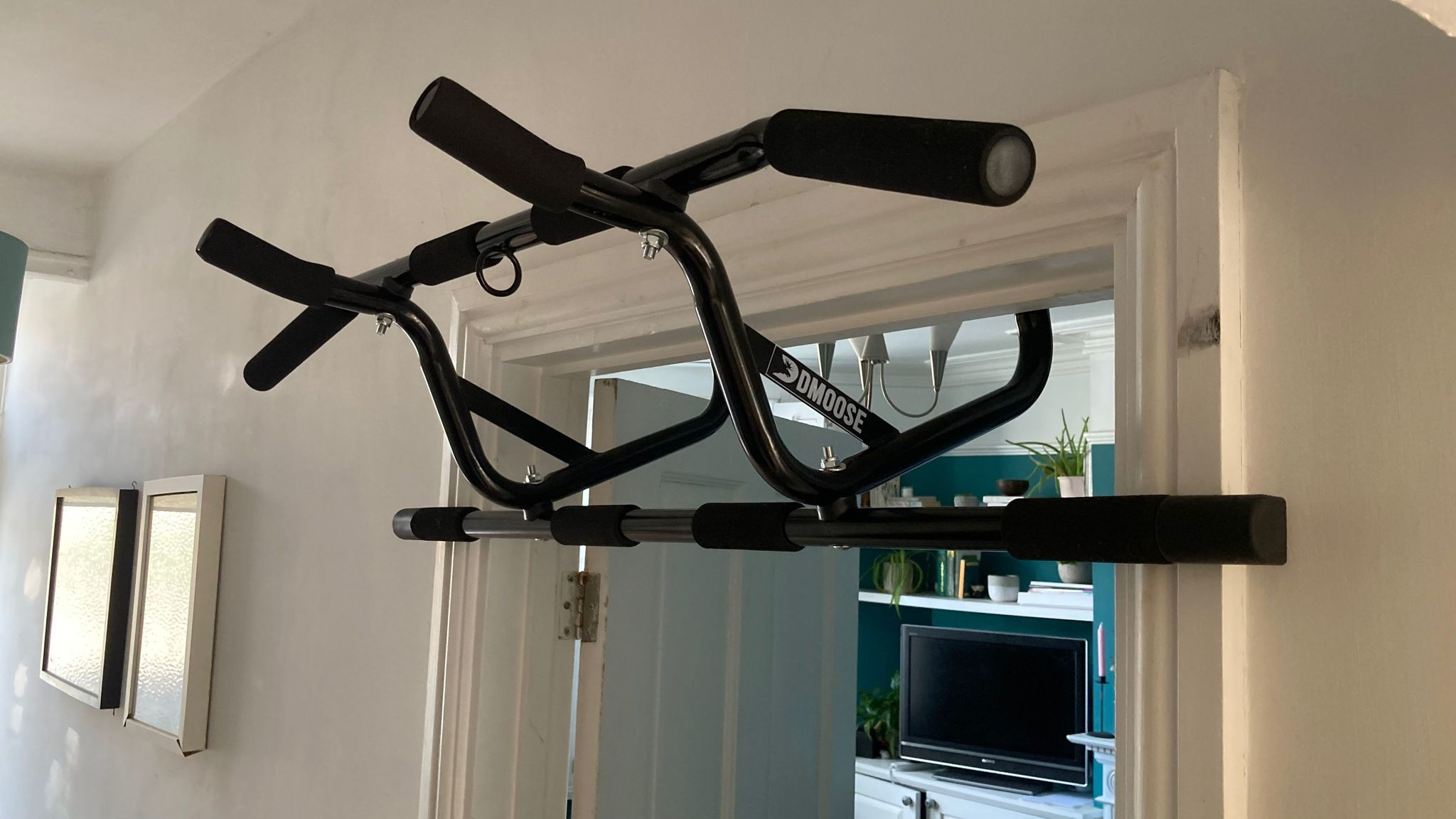
Overhand grip
An overhand grip pull-up is the hardest to do, because it places more of the workload on your lats. The wider your grip, the less help your lats get from other muscles, making a rep harder.
Underhand grip
This grip turns a pull-up into a chin-up, and places more emphasis on your biceps, which makes it more of an arms move than a back one. Your hands should be shoulder-width apart.
Neutral grip
A neutral or palms-facing grip is your strongest hand position because it distributes the workload between multiple muscles. Use it initially to start building strength, or even as your final grip for a drop set.
Pull-Up Challenges
When you become a relative pull-up pro, test your mettle with these challenges.
Russian Special Forces challenge
This test stems from the entrance exam undertaken by new recruits to the Russian Special Forces. It’s not for the faint-hearted. You’ll need to perform 18 complete pull-ups without sacrificing form or technique. If that doesn’t sound tough enough, you’ll have a 10kg weight attached to your body—either in the form of a kettlebell, plate or weighted vest.
Dead hang challenge
Select a weight with which you can perform 15 comfortable pull-ups. That may be your bodyweight alone, or you may be able to add 5-10kg via a weighted vest or dipping belt. Your challenge is to hang at the bottom portion of the lift for 1-2min (depending on fitness level). It’s not as easy as it sounds, and to make it tougher, retract your shoulder blades as if you were about to perform an actual pull-up—and hold that position. This is extremely useful for those looking to quickly gain strength on the pull-up.
The 10-set press-up/pull-up combo
Five pull-ups, straight into 10 press-ups. No rest in between. Ten sets. Ideally perform this at the end of your session for a strength and endurance test. It’s a favourite of Combined Strength coach Andy MacKenzie, and while appearing relatively simple at first glance, will lead to a lung-busting finish.
Pull-Up Variations
We’ve put together 13 variations—from the first-time negative pull-up to the ultra-difficult towel grip pull-up—to help progress your pull-up game. Once you can do a set of six to eight reps, move up the scale. Adding an extra pull-up each week is a good rule of thumb.
1. Banded pull-up
How to do it Loop a resistance band around the pull-up bar and place one foot in the loop. The greater the resistance of the band, the more assistance it will provide.
Why? “This is a way to reduce the load of a pull-up on your muscles,” says Scott. “The band will help you more at the bottom of the movement and less at the top. This works well for most people because they’re weakest in the first phase of the exercise, pulling from a dead hang, and strongest at the top.”
2. Negative/eccentric pull-up
How to do it “Your starting position should be at the top of a pull-up with your chin above the bar,” says Scott. “To get there, you can jump up or use a box to give you a helping hand. Then, slowly lower yourself down to a dead hang, taking between five and ten seconds.”
Why? “We are stronger in the eccentric portion of the movement. So if we can’t do a pull-up, we can learn to control our body through this range of motion and build strength until we can eventually perform one.”
3. Kipping pull-up
How to do it Exactly the same as the classic move, except you swing your legs to generate the momentum to pull to the top of the move.
Why? Practising with this move will build power in all your major back muscles.
4. Close-grip chin-up
How to do it Take a narrow grip with your hands so that your palms are in front of your face.
Why? This variation increases the involvement of your biceps, reducing the load on your back muscles and making the move slightly easier.
5. Classic pull-up
How to do it Grasp the bar with an overhand grip with your hands just wider than shoulder-width apart. Let your body hang straight down with your arms fully extended. Pull up and squeeze your lats until your chin is over the bar, before lowering slowly to the start position without swinging.
Why? Because it's an old-school classic that will work your upper-body like few other exercises.
6. Tarzan pull-up
How to do it Grip the middle of the bar, with both hands almost touching. Pull yourself up and, as you reach the top, twist your body to go up and to the right before lowering and then repeating to the left side.
Why? This requires greater co-ordination during the 'up' move to raise your body to each side, while a strong core is developed to prevent your lower body from swinging.
7. Side-to-side pull-up
How to do it Grip the middle of the bar, with both hands almost touching, as with the Tarzan pull-up, but raise yourself higher, so that your head can clear the bar for each shoulder to touch it on alternate reps. Get good at this tricky move by first focusing on pulling yourself up as high as possible, ideally so that your chest touches the bar. As you get stronger move your head to one side of the bar to get even higher, and alternate sides with each rep.
Why? This variation requires a more explosive “pull” to get you, then keep you, moving to clear the bar. It also means you need greater core control and stability to manage your bodyweight when it’s moving quickly.
8. Pull-up with alternating knee twist
How to do it At the top of the move, draw your knees in to your chest before twisting to the left, then to the right, before lowering slowly to the start.
Why? Your entire core is engaged during the twists, working your abs and obliques, while forcing your muscles to hold you in the 'up' position while you twist.
9. Pull-up with leg raise
How to do it As you reach the top of the move, raise your legs out in front of you until they are parallel to the floor before lowering.
Why? This move will also work your abs and slow down each rep, forcing your back muscles to work harder.
10. Walking pull-up
How to do it With a standard shoulder-width grip, move your legs back and forth in a walking motion as you raise and lower yourself. To “walk” yourself up super-slowly you need to work on your strength. Start with straight pull-ups with knee raises, then fast walking, getting gradually slower.
Why? This is one tough variation, and the slower you raise and lower yourself, the tougher it is. It also requires your core to work harder to keep your leg movement stable.
11. Weighted pull-up
How to do it Secure a weight plate to a belt or place a dumbbell between your legs before performing the move.
Why? If you can do regular pull-ups without too much trouble, the additional weight will shock your muscles into growing bigger and stronger.
12. Round the world
How to do it Pull yourself to the top. As you approach the bar, lift up and to the left before moving across to the right and completing a semi-circle before lowering.
Why? This tough move requires huge strength to hold your body firm while moving sideways and downwards under control.
13. Towel grip pull-up
How to do it Wrap two towels over the bar and grip one with each hand shoulder-width apart. Gripping the towels, pull yourself up to the bar before lowering slowly.
Why? Using towels requires great grip strength and builds forearm muscle power, as well as taxing the whole upper back and biceps.

Sam Rider is an experienced freelance journalist, specialising in health, fitness and wellness. For over a decade he's reported on Olympic Games, CrossFit Games and World Cups, and quizzed luminaries of elite sport, nutrition and strength and conditioning. Sam is also a REPS level 3 qualified personal trainer, online coach and founder of Your Daily Fix. Sam is also Coach’s designated reviewer of massage guns and fitness mirrors.
- Harry BullmoreStaff writer
- Nick Harris-FrySenior writer
- Andre JacksonFormer web editor
